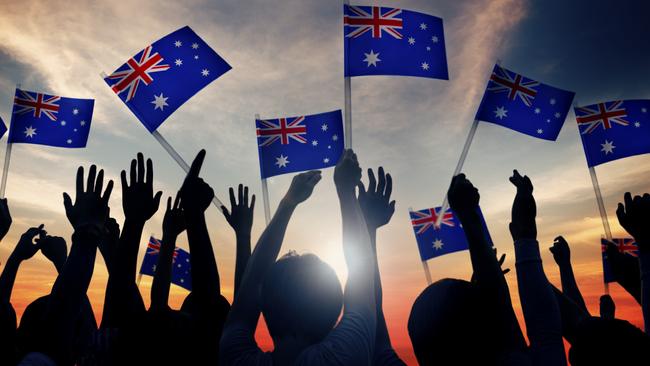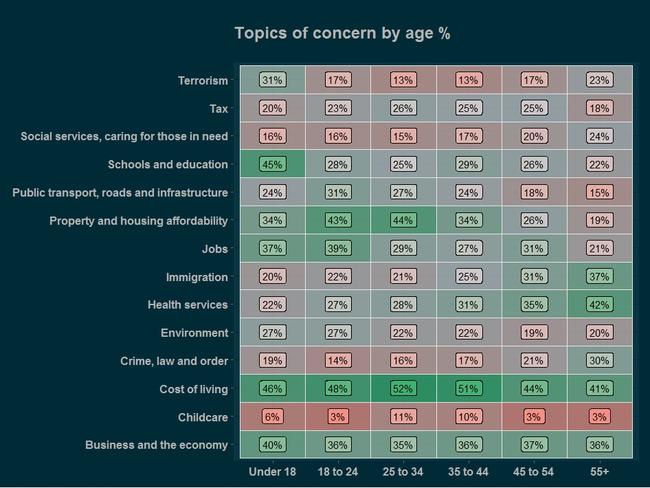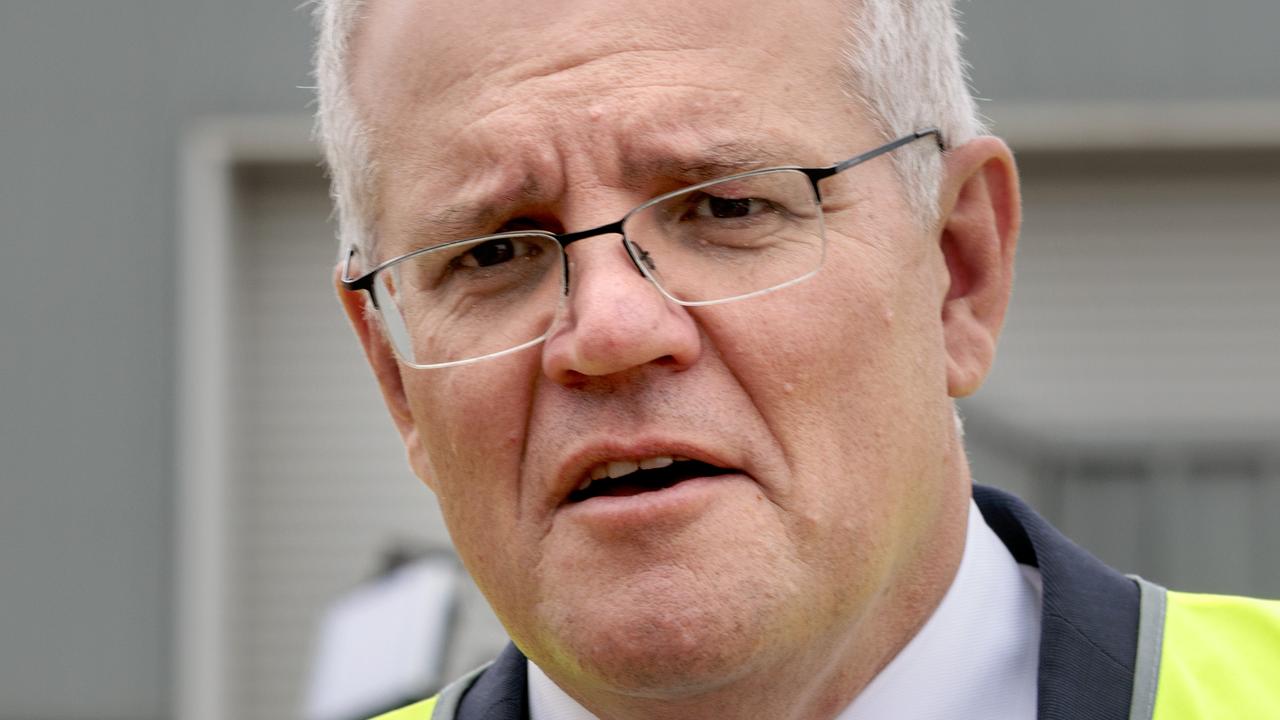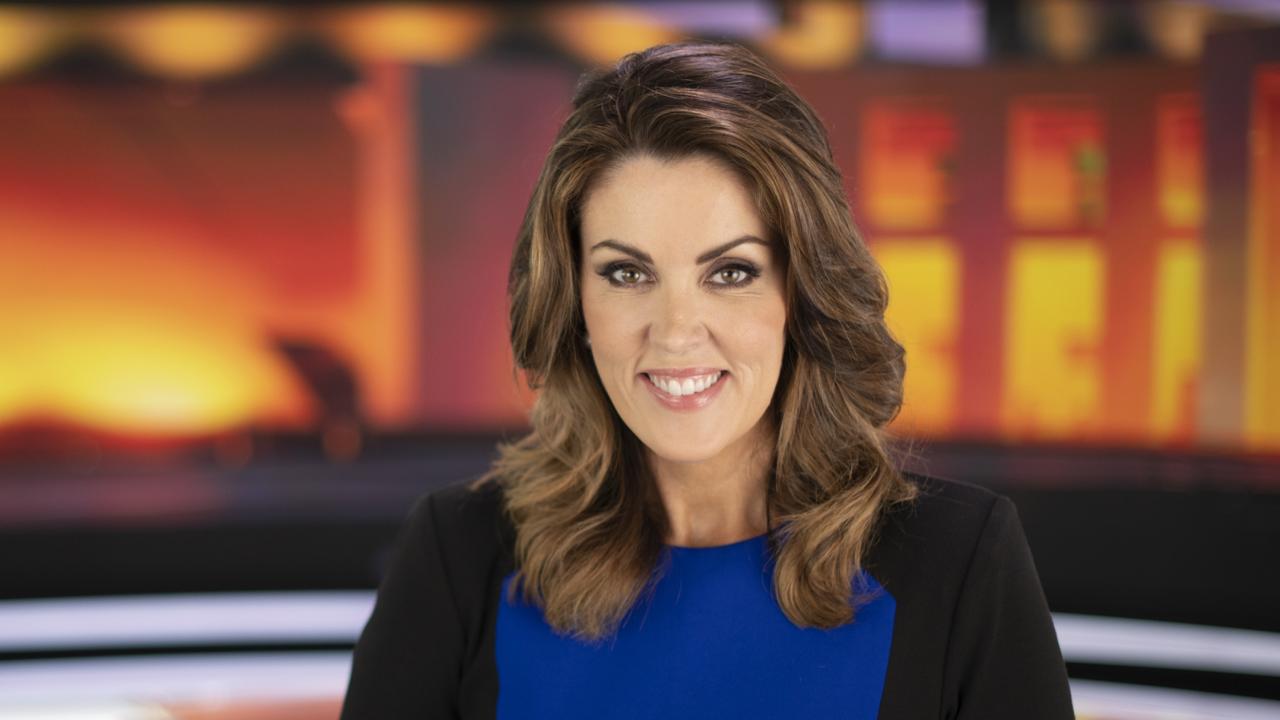Results of the news.com.au State of the Nation survey reveal many people are unhappy
THE country has spoken and we are an unhappy bunch. New data will be sobering reading for our leaders.

THE results of the news.com.au State of the Nation survey will provide a wake-up call for both major parties, with results showing there’s a lot of unhappiness out there.
Results for the online survey were collected in the weeks following the delivery of the Federal Budget in May and more than 10,000 responses were received.
There were responses from every age group and every state in Australia, although 67 per cent were male.
They formed an interesting backdrop for Australia’s first online leaders’ debate hosted by news.com.au and Facebook earlier this month.
There were some very clear results, especially when it came to what people really cared about.
Cost of living was overwhelmingly the top issue that people were worried about, with 13 per cent of respondents listing it as one of their top three concerns. Business and the economy tied with health services on 10 per cent, as the other issues people were concerned about.
It also showed people’s thoughts on housing affordability changed depending on how old they were.
But there was one thing people did seem to agree on. Almost everyone was unhappy with the direction the country was headed in.
THE HIP POCKET NERVE
Cost of living was overwhelmingly the top issue that people were concerned about, with every state except Tasmania reporting it as their biggest concern.
Tassie’s top concern was health, followed by cost of living and then social services.
In other states, business and economy was a top concern.
After cost of living, those in Victoria were concerned about business and economy, then health services, which tied with housing affordability.
Business and economy was also second on Western Australia’s results followed by law and order, tied with immigration.
Queenslanders rated business and economy second, then health services tied with jobs as equally concerning.
In the Northern Territory business and economy was tied with housing affordability as the second biggest concern.
In NSW, health services and housing affordability tied for second place.
It was a similar story for the ACT, which listed health services, then schools and education.
If you break up the results by age, cost of living was still the top concern for every age bracket except for those over 55, with older people more concerned about health services.

THE OLDER WE ARE
No wonder so many people are obsessed with housing affordability.
The younger ones are worried they will not be able to afford to buy, while the older you are, the more likely you are to be concerned about over-inflated prices.
Overall 48 per cent said they were worried property prices were over-inflated, while 28 per cent were worried about never being able to afford a property.
About 58 per cent of those aged over 55 said they were concerned the market was inflated, but only about 33 per cent of those aged under 18 and 18-24 years old were concerned.
Among the younger age groups, the bigger concern was not being able to buy. Between 46-48 per cent were worried they would never afford a property.
But this dropped to 15.89 per cent among those aged 55 and over.
For those aged between 25 to 54, the older you were, the more likely it was that over-inflated property values were a concern.
The percentage of people worried about not being able to afford a property also declined with age.
WE’RE REALLY, REALLY UNHAPPY
Looks like there are a lot of people out there who are not happy. Overall 78 per cent of Aussies said they were unhappy with the direction the country was headed in. Only 22 per cent were happy.
The trend existed for every age group with those aged 45 to 54 the most unhappy. Among this age group, 82 per cent of them were unhappy, a lot more than the 63 per cent of those aged under 18 who were unhappy.
AND THE WINNER IS
As for voting intention, a lot of people were still undecided but the Coalition came out ahead on 30 per cent.
This compared to Labor on 23 per cent, Greens on seven per cent, undecided on 28 per cent, and another 12 per cent who intended to vote for an independent or micro party.
Surprisingly, the Coalition enjoyed support from a high proportion of young people.
Among those aged 18-24, about 31 per cent intended to vote for the Liberal or National parties, compared to 24 per cent voting Labor and 13 per cent Greens.
The gap between the parties does narrow among older voters with a slightly higher percentage voting Labor, but the Coalition regains a significant lead among those aged over 55 years old.
The Coalition also maintains a lead over Labor in every state except three. In South Australia it is beaten by the percentage of people who are undecided, while Labor is more popular in Tasmania and the Northern Territory.

The approval ratings for Malcolm Turnbull and Bill Shorten were very similar.
About 24 per cent approved of Mr Turnbull, only slightly higher than 23 per cent for Mr Shorten.
Mr Shorten’s disapproval was slightly higher at 48 per cent, compared to Mr Turnbull on 47 per cent.
Overall the results make for an interesting look at how people are thinking as we head into the home stretch of this year’s election on July 2.




